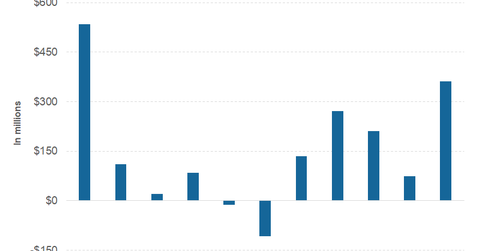A Comparative Analysis of Steel Companies’ Leverage
Steel companies have high sensitivity to steel prices and their earnings tend to be volatile. Spot steel prices have been volatile in the last few years.
Aug. 22 2017, Published 9:27 a.m. ET

Steel companies’ leverage
The metals and mining sector is capital intensive. Companies have to invest considerably to upgrade their facilities and invest in new projects. As a result, metals and mining companies (XME) have to borrow money to meet their capital requirements. However, leverage is a double-edged sword. Companies with higher financial leverage usually outperform their peers in an up cycle. However, during market downturns, which are more of a norm rather than an exception in the cyclical steel industry (MT), companies with a high level of financial leverage come under selling pressure.
Operating leverage
Notably, along with higher financial leverage, some steel stocks like U.S. Steel (X) and AK Steel (AKS) also have a high level of operating leverage due to their high fixed cost structure. However, Nucor (NUE) and Steel Dynamics have relatively lower operating leverage due to their low fixed cost structure.
Steel companies have high sensitivity to steel prices and their earnings tend to be volatile. Spot steel prices have been volatile in the last few years, which led to huge swings in some companies’ profits—especially U.S. Steel.
Series overview
Having comfortable leverage ratios allows a company to pursue inorganic and organic growth without worrying much about the funding dynamics. Also, companies with lower leverage ratios have better credit ratings, which has a positive impact on their financing costs. In this series, we’ll compare steel companies’ leverage ratios. We’ll also compare steel companies’ financial leverage based on different financial metrics.
In the next part, we’ll start by looking at steel companies’ interest coverage ratio.
